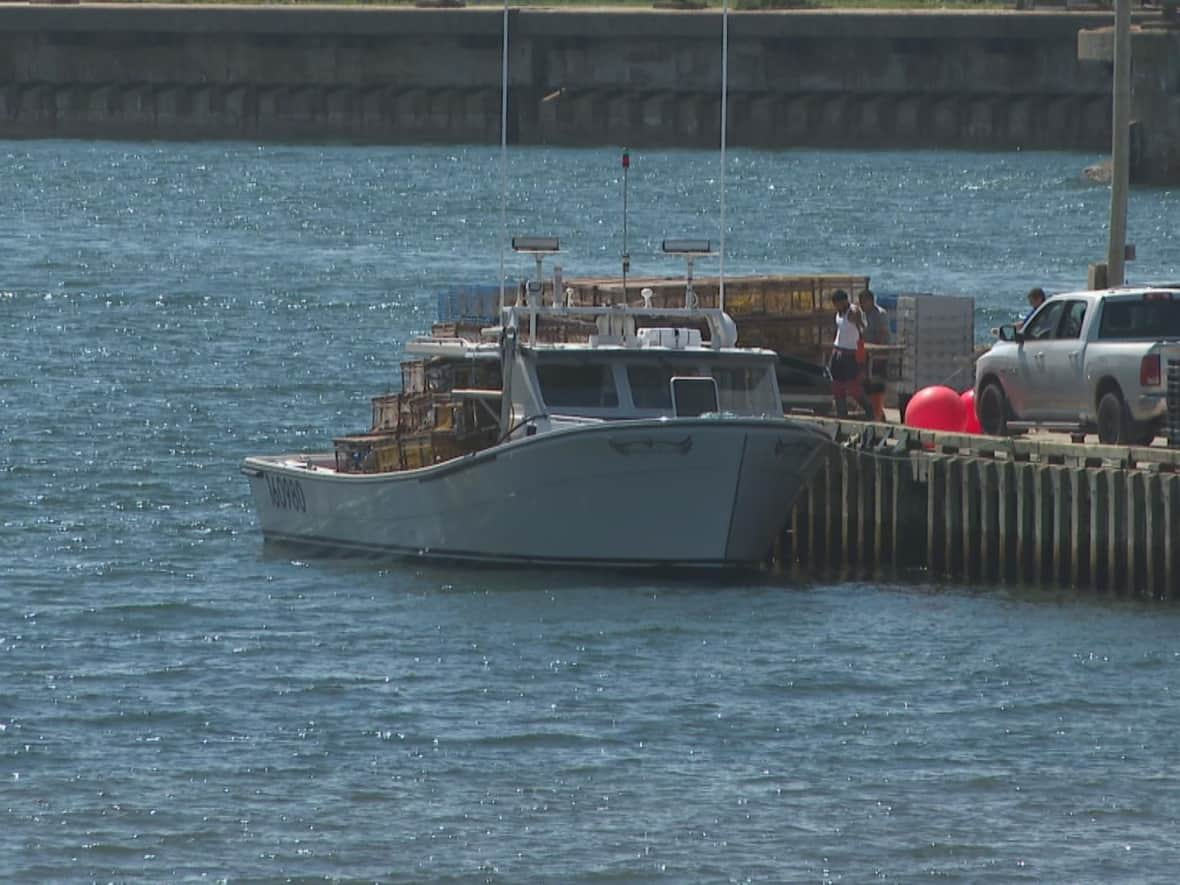Lennox Island treaty fishers join P.E.I.'s fall lobster fishery for 1st time

For the first time — and possibly the last time — treaty fishers from Lennox Island First Nation are taking part in Prince Edward Island's fall lobster fishery.
Crews in two boats began setting out the first 400 treaty traps Thursday morning from the wharf at Borden on the Island's south shore.
"There are some fishermen there who we spoke to and who are opening their arms and welcoming us there. So we're really appreciative of that," said Lennox Island Chief Darlene Bernard.
The chief told CBC News the band had a goal of setting a total of 1,000 treaty traps in 2022 as it started to exercise its right to fish for a moderate livelihood outside the commercial fishery that operates under federal government authority.
That's a right that was reaffirmed by the Supreme Court of Canada's Marshall decision in 1999.
Lennox Island fishers ended up setting only 250 of a planned 300 traps after the spring season opened in early May, so the 700 being set this week in Lobster Fishing Area 25 (LFA 25) will bring the crews closer to the 1,000-trap goal.
By comparison, about 190,000 traps were set in the spring commercial lobster fishery.

"We had absolutely no issues on this side with our treaty fishers," Bernard said of the spring fishery out of the Lennox Island wharf. "They followed our rules, they came in and were monitored. And they were quite happy, you know, that they were able to do this work and make money."
A spokesperson from the Department of Fisheries and Oceans sent a statement to CBC News about the treaty-protected fishery on Friday morning, confirming it was included in an understanding Lennox Island reached with DFO earlier in the year.
"As was the case in the spring fishery in LFA 24, the First Nation will fish in LFA 25 during the same season as commercial harvesters," the statement said.
"Management measures will be similar to the commercial lobster fishery, including trap standards and minimum carapace size (79 mm), Species at Risk Act requirements and marine mammal protection measures such as gear marking."
Goal is to gain experience
Bernard said she hopes the treaty-protected fishery will help young members of the community gain experience in fishing safely and with support, "and then if they want to go into the commercial fishery, then they can later on."
For now, seven Lennox Island families will be fishing 700 fall fishery treaty traps — 100 traps per family.

In the future, Bernard said Lennox Island intends to fish all of its 1,000 treaty traps during the spring season — when boats can operate out of their own wharf.
The long-term goal is for Lennox Island to obtain a greater share of the available commercial licences in the waters off Prince Edward Island. They do have about 30 commercially-licensed boats now, including some involved in the fall fishery.
As for conservation measures, the chief says Fisheries and Oceans Canada has told band officials the added pressure on stocks posed by the treaty fishery will be offset by retired commercial licences.
'Not welcome' in some harbours
Finding space for the treaty-rights boat in a harbour near LFA 25 wasn't easy, she added.
"We've been pulling our hair out in trying to find a safe harbour," she said. "So we kind of went along, all along the coast, and some areas there was no space, but in some other places where there was space, we were not welcome there.

"And I found that very disheartening, to be getting that feedback from … non-Indigenous commercial fishermen who didn't want us there.
"But, you know, we kept right on trucking along."


